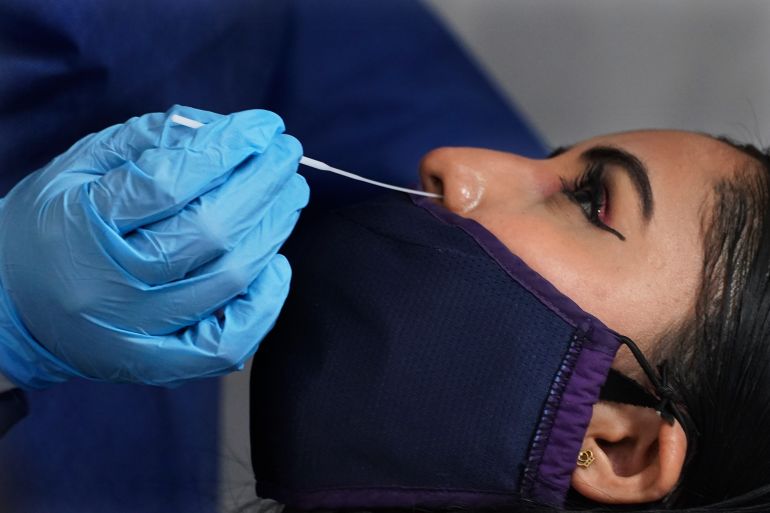COVID cases in Americas hit highest level on record: PAHO
Health systems across the region are feeling the strain of a rapid rise in cases and hospitalisations linked to Omicron.

New COVID-19 infections in the Americas have reached their highest level since the pandemic began, health officials said, as the highly contagious Omicron variant is now the predominant strain in the region.
During a weekly virtual news briefing on Wednesday, the Pan American Health Organization (PAHO) said more than eight million new COVID-19 cases were reported in the Americas during the past week, a 32 percent increase than the previous week.
Keep reading
list of 3 itemsPfizer, Moderna boosters up to 90% effective against Omicron: CDC
Omicron ‘sub-variant’ throws up new virus questions
Some 18,000 deaths also were reported, a 37 percent increase over the same time period.
PAHO Director Carissa Etienne said the United States continues to have the highest numbers of new infections in the region, despite a recent decrease in overall cases, while deaths were up 107 percent this week in Central America compared with last week.
In Mexico’s southern states, the number of new infections has tripled during the past week.

“As COVID cases are spreading more actively – and more quickly – than ever before, it’s clear that Omicron has become the predominant … strain in our region at the moment,” Etienne said during the news conference.
The new data comes as health systems across the Americas have been feeling the strain of a rapid rise in cases and hospitalisations linked to Omicron. The spike in infections has once again caused staff shortages and forced some hospitals to ration care.
Etienne said Belize is currently reporting the highest rates of new infections in Central America, and infections are rising in Honduras and Costa Rica. In South America, Paraguay and parts of the Guianas are seeing COVID-19 cases double nearly every two days, she added, and infections are especially high in Bolivia, Peru, and Ecuador.
Meanwhile, Brazil reported a total case count of 477,000 during the past week – a 193 percent increase over the prior week, while Haiti and Martinique – where vaccination rates are still low – are continuing to report significant case figures.
Crucial to combatting the spread of the disease, Etienne said, is the accurate collection of data.
“Now more than ever, we need data about how this virus is affecting different ages, genders, groups, and geographies, so we can equip local municipalities and districts with the tools they need to manage risk and guide their populations during this time,” she said.
These data 📊 are also critical to help countries identify gaps and target resources to ensure that the people most at risk of severe COVID-19 disease and death are protected first.@DirOPSPAHO #COVID19
— PAHO/WHO (@pahowho) January 26, 2022
In the US, the US Centers for Disease Control and Prevention (CDC) said during the past week an average of 692,000 new cases have been detected daily, a decrease of 6 percent from the previous week.
Hospitalisations are at 19,800 per day on average, an 8 percent decrease from a week ago, while deaths rose to an average of 2,200 per day – a 21 percent increase.
CDC Director Rochelle Walensky said despite the high case count, the hospitalisation rate is lower than during previous waves of the pandemic, thanks to vaccines, immunity due to previous infection, as well as the likelihood that Omicron is less severe than prior variants.
Still, Walensky said there are more people hospitalised than ever before in the country, straining health systems. Hospitalisation rates also are high among unvaccinated adults – a persistent problem in the US, where despite the availability of vaccines and boosters, tens of millions of Americans remain unvaccinated due to misinformation and political ideology.
“Although it’s encouraging that Omicron appears to be causing less severe disease, it’s important to remember that we are still facing a high overall burden of disease,” Walensky said during a regular COVID-19 taskforce news briefing on Wednesday.
“I know many people are tried but many of our hospitals are still struggling beyond capacity.”